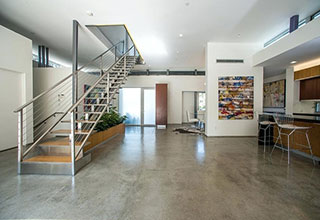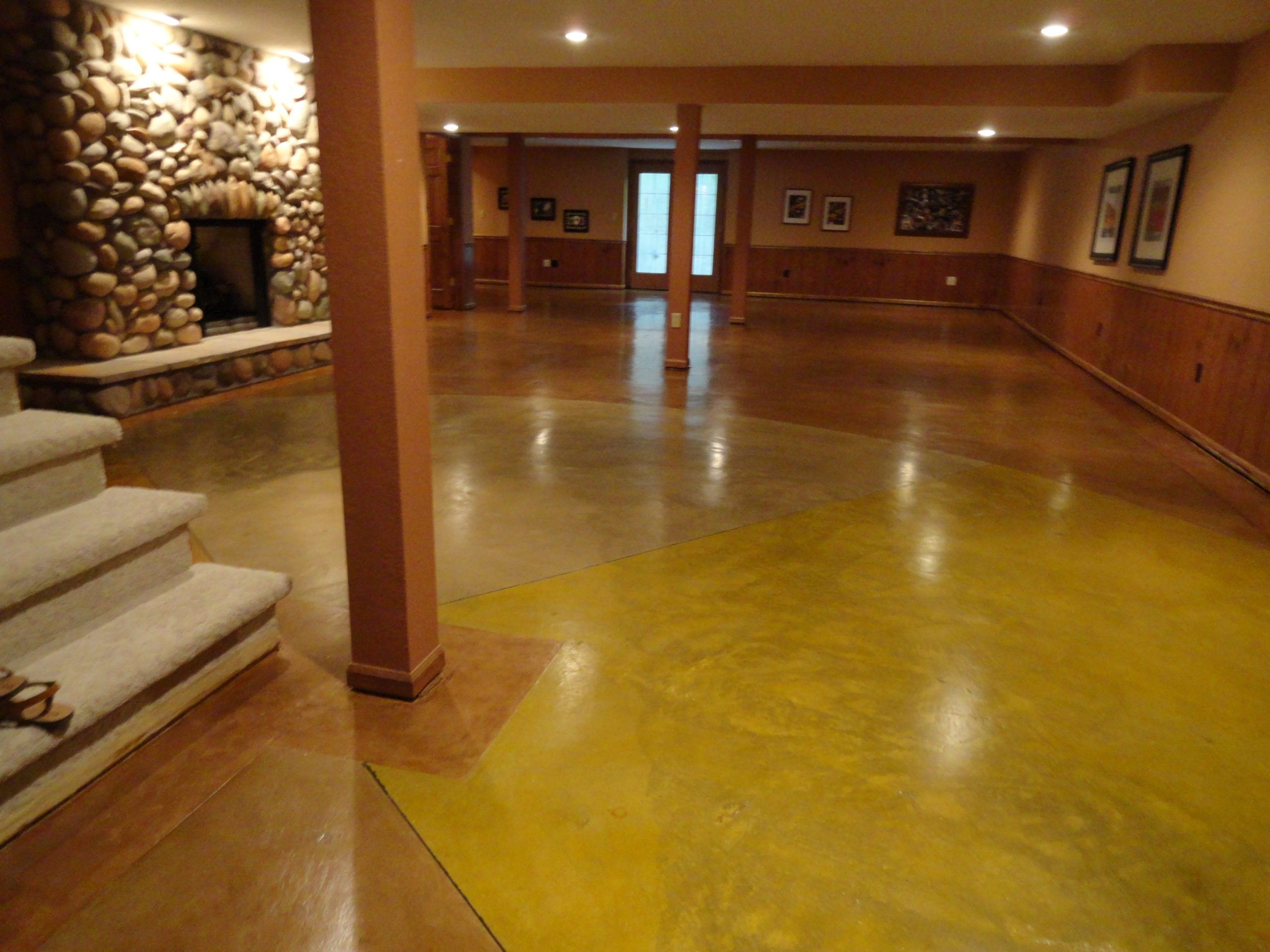Elevate Your Indoor Areas with Residential Stained Concrete Floors
Elevate Your Indoor Areas with Residential Stained Concrete Floors
Blog Article
Why Regional Tainted Floor Covering Is the Perfect Selection for Sustainable Home Renovation
In the realm of sustainable home renovation, local stained flooring has emerged as a prominent option amongst environmentally conscious home owners. The one-of-a-kind blend of aesthetic allure, sturdiness, and ecological advantages it provides can not be neglected. By utilizing locally sourced timber, it cultivates a favorable ecological effect, and the discoloration procedure boosts resilience while lessening harmful chemical usage. As a cost-efficient investment with minimized upkeep demands, it elevates a thought-provoking inquiry: could this be the optimal service for sustainable housing?
Comprehending the Concept of Regional Discolored Flooring
While the concept might appear novel to some, neighborhood stained floor covering is an ingenious approach to home enhancement that combines aesthetics, toughness, and sustainability. The staining process not only boosts the all-natural charm of the timber grain however additionally adds a layer of security, raising the longevity of the flooring. Utilizing local wood varieties commonly supports neighborhood economies and promotes accountable woodland monitoring methods.
The Visual Appeal of Regional Tainted Floor Covering
Why is neighborhood discolored floor covering acquiring appeal for its aesthetic appeals? Local stained floor covering offers a varied range of patterns and shades, reflecting the all-natural charm and variations of the regional wood species utilized. Inevitably, the appeal of local discolored flooring lies in its capability to transform homes into distinctive, visually appealing spaces while promoting sustainability.
Ecological Impacts of Local Discolored Flooring
The environmental ramifications of local discolored flooring encompass two considerable aspects: lowering carbon impact and waste reduction benefits. Making use of in your area sourced products for staining not just diminishes transport discharges, but also promotes lasting forestry methods. In addition, the waste reduction aspect comes into play as these floor covering types frequently have a longer lifespan, lowering the frequent demand for replacements and the waste connected with it.
Reducing Carbon Impact
As property owners transform to more sustainable options, neighborhood stained flooring arises as a practical service to lower carbon impact. The procedure of tarnishing the flooring, instead than making use of artificial finishes, entails fewer chemicals and less energy-intensive procedures. Choosing for regional discolored floor covering shows an effective procedure in advertising ecological sustainability, highlighting a substantial way homeowners can add to combating climate adjustment from the comfort of their own homes. Local Stained Concrete.
Waste Reduction Advantages
Although frequently overlooked, waste minimization is an additional significant advantage of local stained floor covering. By selecting this option, homeowners help in reducing the mass of waste headed to land fills. This flooring kind, normally sourced from local timber, can be restored, refinished, and recycled, including in its longevity. Unlike artificial flooring, it does not add to the growth of non-biodegradable waste. Additionally, the staining procedure utilizes less sources and generates less waste compared to making new floor covering products. Any kind of waste generated throughout the discoloration procedure is naturally degradable and generally natural, mitigating ecological injury. The selection of local discolored flooring not just enhances homes but likewise underpins a commitment to lasting living and waste decrease.
The Sturdiness and Maintenance of Neighborhood Discolored Flooring

The Cost-Effectiveness of Regional Tainted Flooring
While neighborhood tarnished flooring might originally appear a lot more costly than other options such as carpeting or laminate, its durability and resilience quickly transform it right into an economical selection. The upfront cost is commonly countered by the decrease in upkeep expenditures over time. Unlike carpets that need routine deep cleaning or laminate that may require replacement after a few years, discolored floors are developed to more tips here last, lowering the need for costly repairs or replacement. Local sourcing of materials reduces transport prices, adding to both monetary cost savings and a reduced carbon impact. For property owners looking for a sustainable, economical remedy for their floor covering needs, neighborhood stained flooring becomes a premium, long-term financial investment that settles over time.

Reality Instances of Sustainable Homes With Regional Discolored Floor Covering
In the realm of sustainable home enhancement, regional tarnished flooring has actually emerged as a popular alternative. To even more highlight its advantages, a number of reality instances of environmentally friendly homes that have efficiently included this floor covering strategy will be highlighted. These case researches offer tangible proof of the advantages and impact of making use of neighborhood discolored floor covering in lasting homes.

Showcase: Eco-Friendly Floor Covering Residences
Scanning the globe, one can locate many homes that symbolize the concept of environmentally friendly living through the usage of local tarnished floor covering. Across seas in copyright, a contemporary house showcases its rich, maple-stained floor covering, a testament to the bountiful regional wood supply (Commercial Stained Concrete Floors). These homes not just showcase the aesthetic versatility of neighborhood discolored floor covering however also its payment to an extra sustainable way of living.
Regional Tainted Flooring Advantages
The indisputable attraction of regional tarnished flooring prolongs beyond its visual moved here charm, as it also uses significant advantages to both property owners and the atmosphere. This kind of floor covering is sourced and created locally, lessening transport emissions and boosting the neighborhood economy. The staining process utilizes all-natural, safe products, advertising interior air quality and decreasing the home's environmental impact. In a lasting home in Portland, Oregon, for instance, neighborhood stained concrete floors not only improve the visual appeals however also serve as thermal mass, taking in warm throughout the day and launching it during the night, reducing power use. Another instance is a green-certified home in Austin, Texas, where locally sourced walnut was discolored and made use of for floor covering, adding to the home's LEED certification.
Conclusion
In verdict, neighborhood discolored flooring is a sensible and lasting option for home improvement. With its distinct blend of ecological, cost-effective and aesthetic benefits, local stained floor covering is a clear option for home owners looking for a lasting, cost-effective and aesthetically attractive home renovation service.
In the realm of sustainable home improvement, neighborhood tarnished floor covering has actually emerged as a prominent choice among ecologically aware home owners. Local discolored flooring supplies a diverse range of patterns and shades, showing the natural elegance and variations of the local wood varieties utilized. The selection of local stained floor covering not just improves homes but likewise underpins a commitment to sustainable living and waste decrease.
For home owners looking for a sustainable, cost-effective option for their floor covering needs, regional discolored floor covering arises as a premium, long-lasting financial investment that pays off over time. Local Stained Concrete.
With its special blend of environmental, aesthetic and economical benefits, local stained floor covering is a clear choice for homeowners seeking a sustainable, visually enticing and affordable home renovation remedy.
Report this page